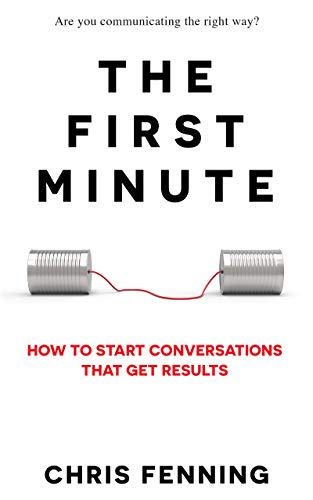
The First Minute: How to Start Conversations That Get Results

It became clear that many work conversations started with the following issues. Failing to provide context for the message. This happens when the audience doesn’t know what the topic is about. Not having a clear purpose for the message. This happens when the audience doesn’t know why they are receiving the information. Not getting to the point fast
... See moreChris Fenning • The First Minute: How to Start Conversations That Get Results
In the context of this book, the first minute is not always the start of the interaction with your audience. It does not include the greeting or the time spent on personal engagement. Throughout this book, the first minute refers to the start of the work conversation. The clock starts when you shift from personal to professional topics.
Chris Fenning • The First Minute: How to Start Conversations That Get Results
Research shows that poor first impressions can be reversed by a consistent strong performance. It takes eight good impressions to overturn a bad one.
Chris Fenning • The First Minute: How to Start Conversations That Get Results
The techniques described in this book are based on the following core principles. You must prepare your audience to receive your message before you deliver it. People are busy, so you need to get to the point quickly. The most effective work conversations focus on actions and solutions, not on problems.
Chris Fenning • The First Minute: How to Start Conversations That Get Results
The first minute is not about trying to condense all the information into sixty seconds. It is about having clear intent, talking about one topic at a time, and focusing on solutions instead of dwelling on problems. Creating the most effective first minute of any work conversation is a two-step process. Step 1: Frame the conversation in fifteen
... See moreChris Fenning • The First Minute: How to Start Conversations That Get Results
I am going to start by addressing the most common causes of miscommunication at work. Lack of context Unclear purpose Not getting to the point Mixing up multiple topics in the same conversation Lengthy, unclear summaries You’ll learn how to avoid these pitfalls and how to summarize your entire message in less than a minute. The result will be a
... See moreChris Fenning • The First Minute: How to Start Conversations That Get Results
we know what we are going to talk about and why it’s important. Unfortunately, the people we speak to don’t know either of these things.
Chris Fenning • The First Minute: How to Start Conversations That Get Results
Finally, you’ll discover the three components required of a structured summary: 1) the goal you are trying to achieve, 2) the problem stopping you from reaching that goal, and 3) the solution to the problem.
Chris Fenning • The First Minute: How to Start Conversations That Get Results
Each time we start a conversation, we know what we are going to talk about and why it’s important. Unfortunately, the people we speak to don’t know either of these things.